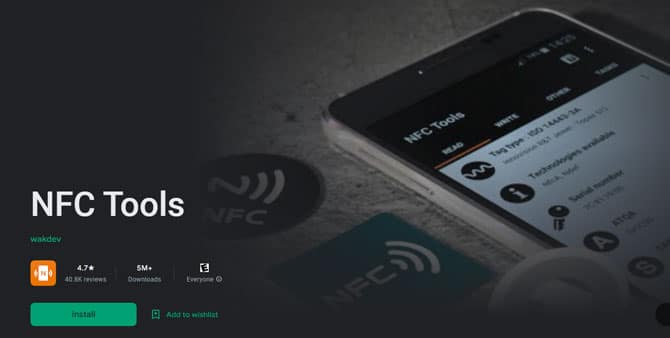When we discuss implementing a high-frequency RFID strategy with our customers, often, they don’t realize they already have an essential component in their back pocket—their smartphone!
For a while now, smartphones have been enabled to interact with certain high-frequency tags using NFC. Here we’ll define NFC and discuss how you can use smartphone apps to get started with NFC in the lab.
What is NFC?
NFC stands for near-field communication and refers to a protocol within high-frequency (HF) RFID contactless communication technology that runs at a standard base frequency of 13.56 MHz.
This technology facilitates close-range information exchanges, so image swaps, message deliveries, and transactions can occur with a simple tap. RFID solution providers can insert tags into various materials, allowing many objects to communicate with NFC devices. NFC devices can be NFC-enabled RFID scanners, credit card readers, or even smartphones.
How to use NFC and smartphones in your laboratory
Utilizing your smartphone’s NFC capabilities within your facility can be efficient since your employees will already have the tools they need to interact with RFID tags at their fingertips.
We recommend two smartphone apps to our customers looking into using smartphones alongside their NFC strategy:
Here are a few things those apps can help you do
Read
As a protocol within RFID, NFC involves the same components and basic functions. Tags hold information, and NFC-enabled devices like your smartphone can read those tags, which can be helpful in laboratory environments. For example, let’s say your lab has implemented an RFID plan to include additional verification information that won’t fit in a traditional barcode. This information can be accessed by approved technicians easily on their smartphones.
Write
In addition to reading the information, smartphones can write data to tags. Depending on your purposes, this can be helpful in several ways, but most notably, it allows users to make updates to the stored information.
With the ability to write to tags from a smartphone, you can easily update information on samples. So, barcodes can store static data, and the app can add patient-specific or time-sensitive information to the RFID tag as it becomes available.
Get Organized
Certain apps and customized software will allow the information you collect from your tags to automatically record in your computer systems as your smartphone scans it.
A strategy like this combines the power of NFC with The Cloud to automate tasks that previously might’ve been very tedious.
If you’re interested in something like this, discussing a plan of action with your integration partner is best to ensure an easy transition. In many cases, it’s a good idea to work with customized software and build an organization system similar to your current one to ease the transition.
If you’re thinking about implementing a high-frequency RFID plan, consider whether your team would benefit from utilizing smartphones to read and write to tags. Also, ask your integration partner if your practice aligns with an implementation plan that allows your team to leverage their smartphones in the lab.

